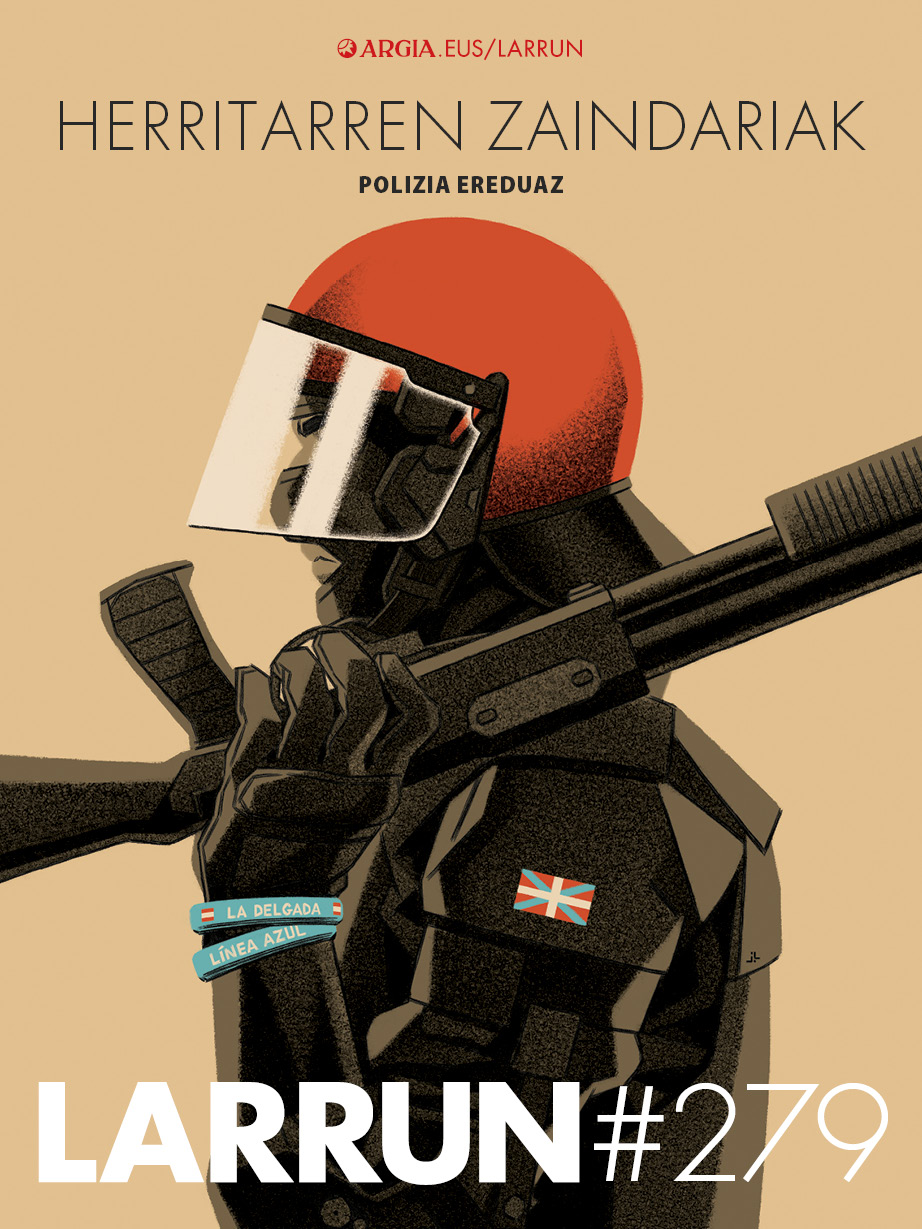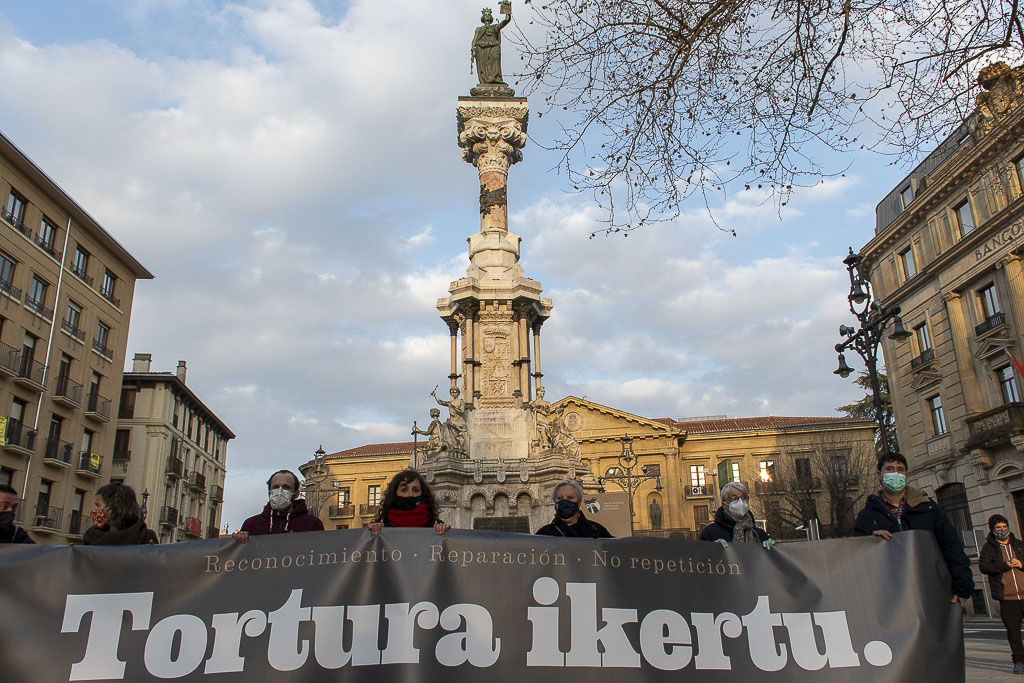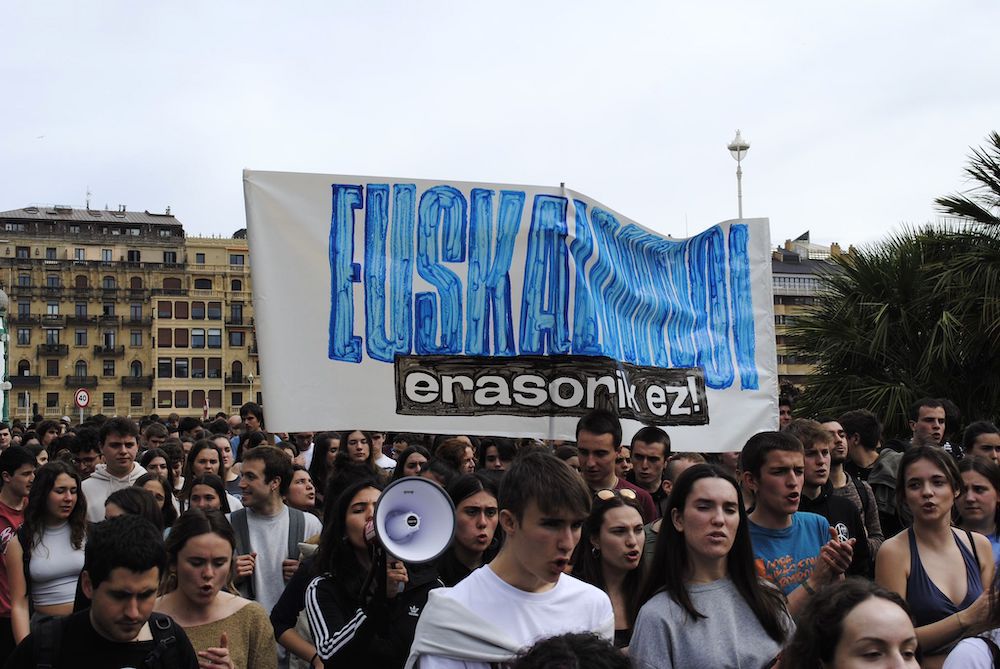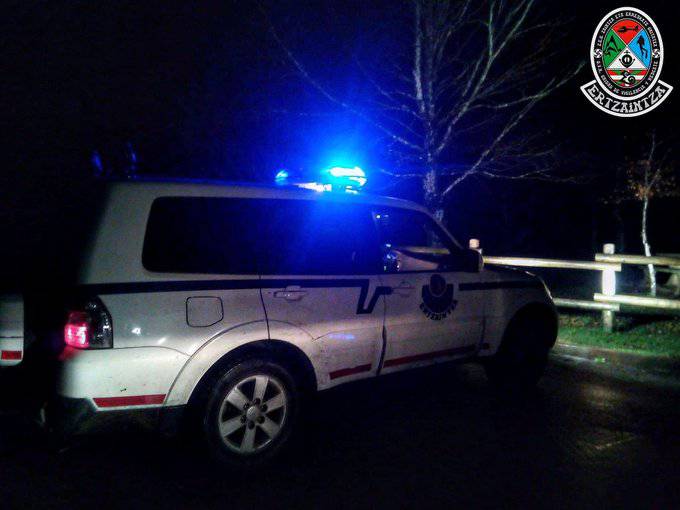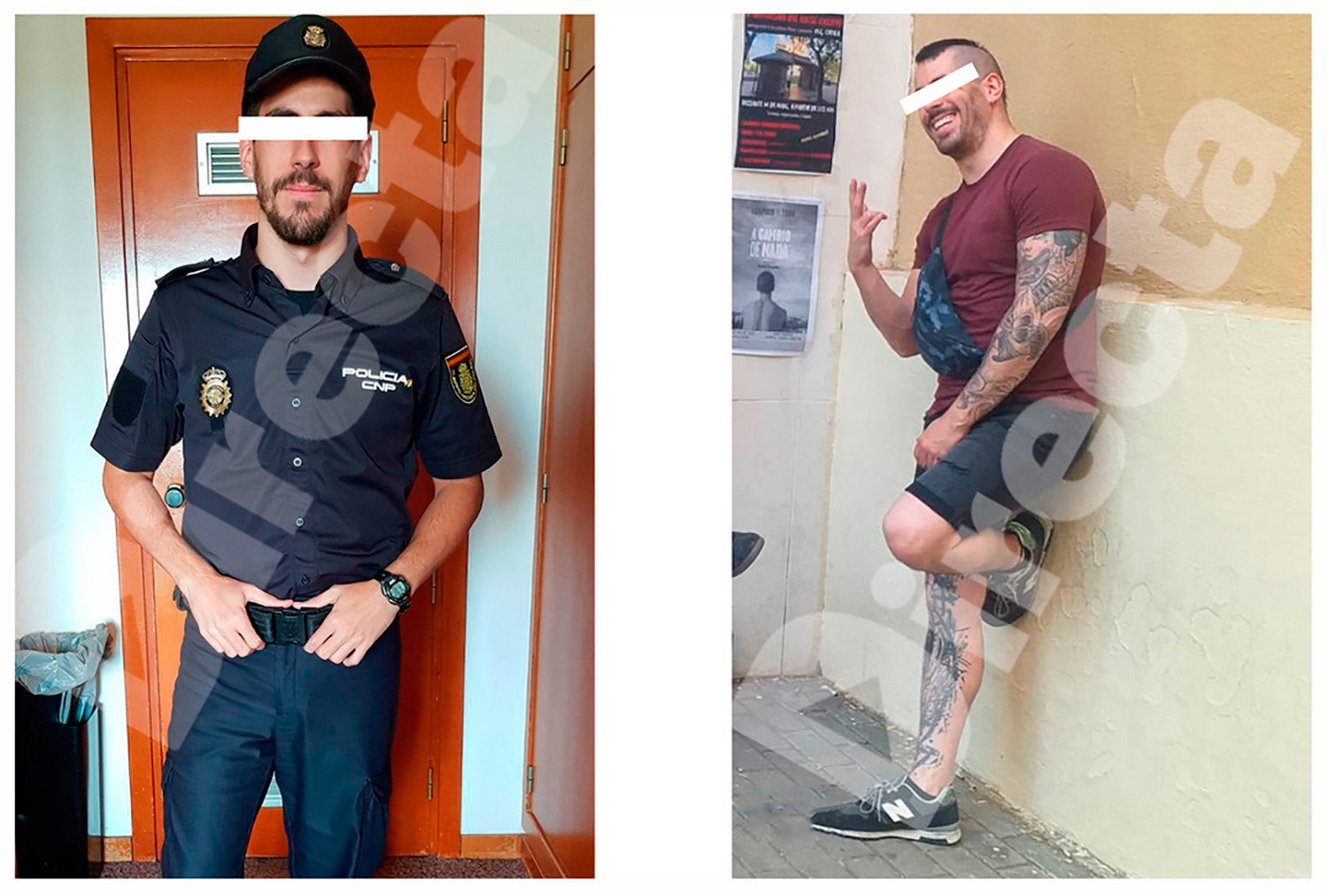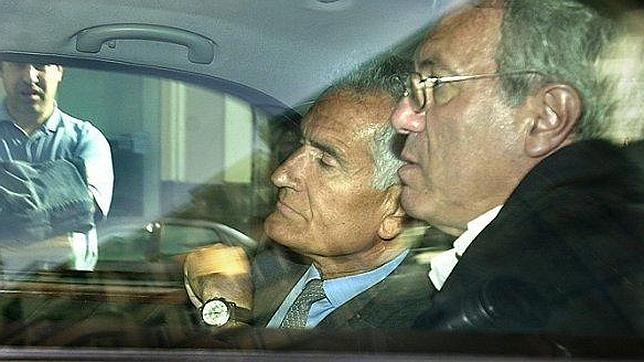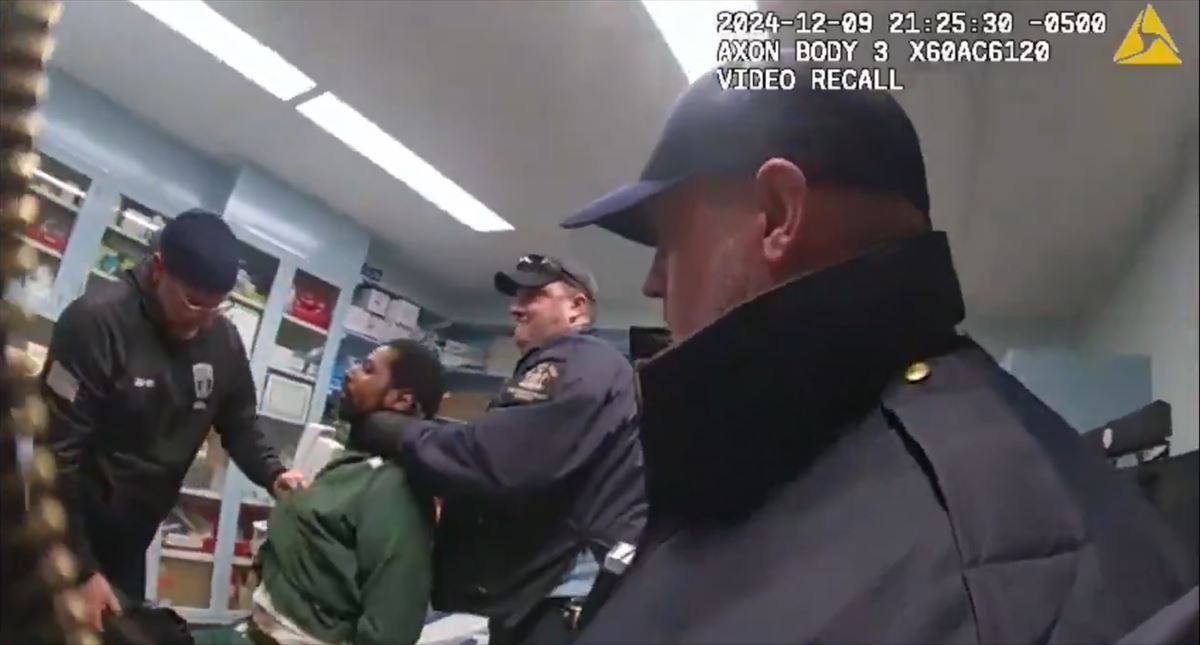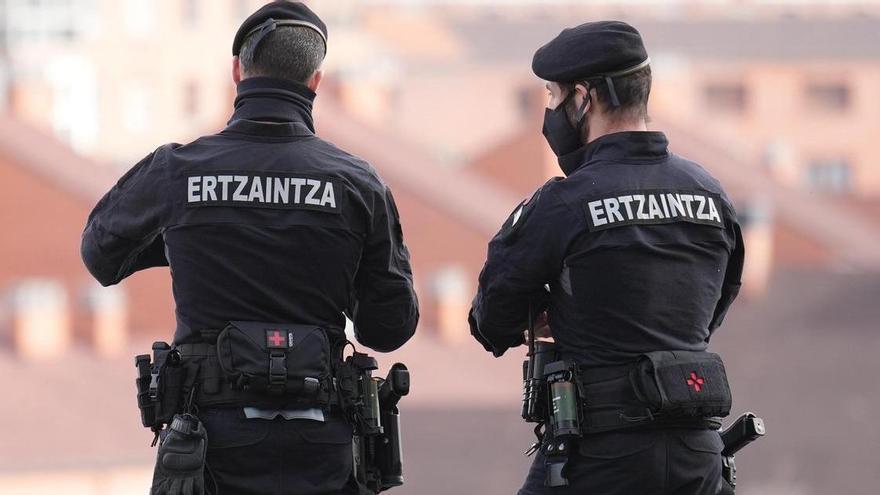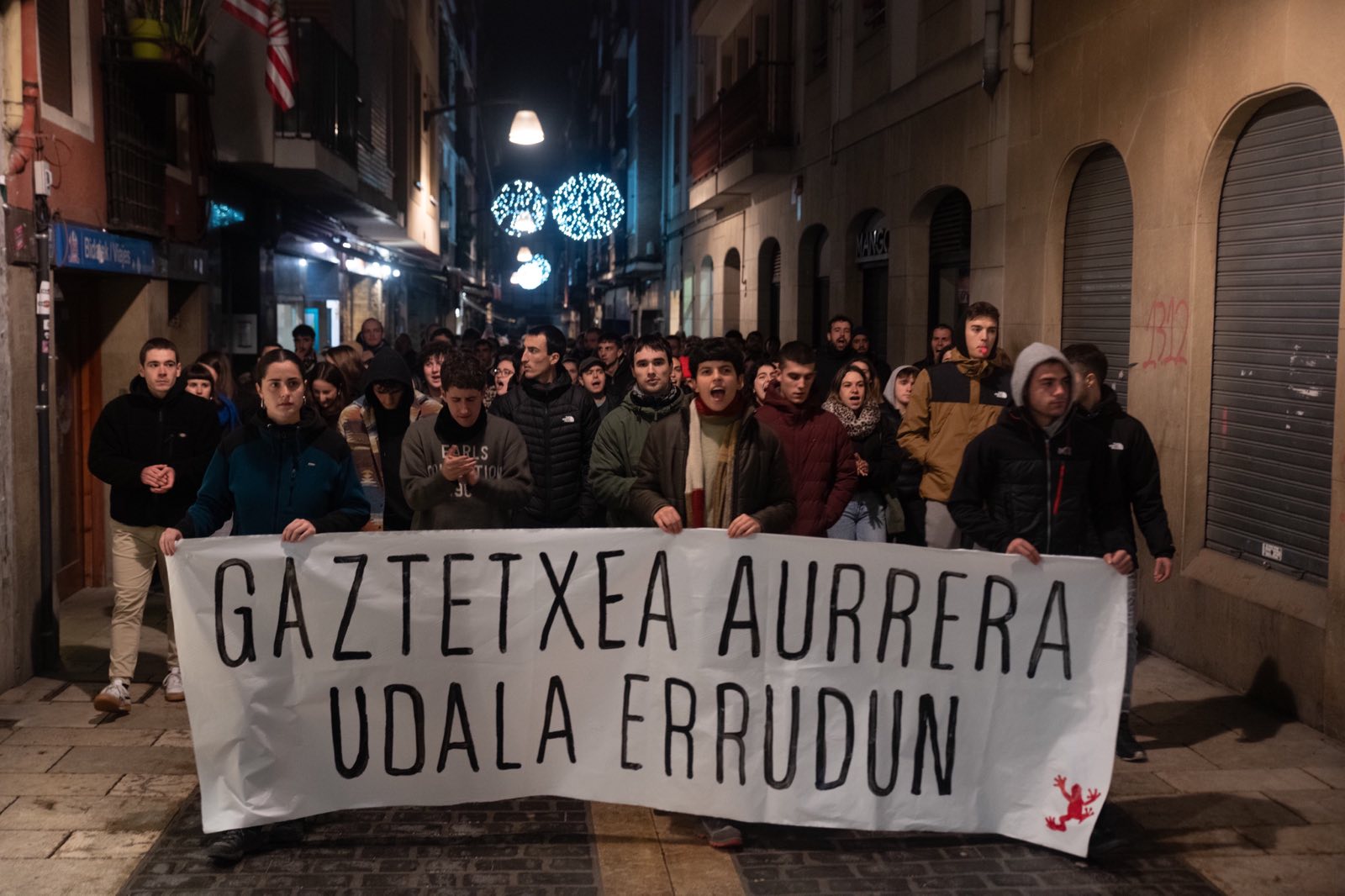The police in Euskal Herria, starting point and debate on the model
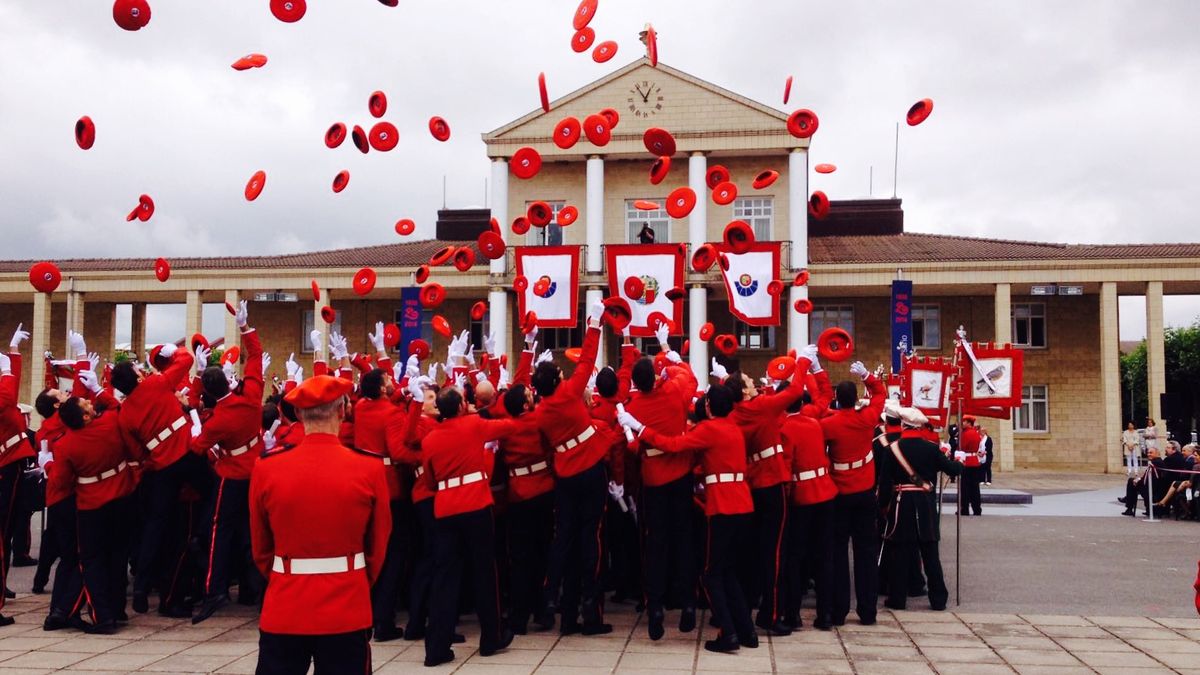
Read the first part of the report: Order in capitalist states: the social function of police power
Neocleous comments that it has made known the infinite nature of police intervention during the pandemic. Precisely, this vague and broad surveillance of the capitalist order has allowed the Police to demonstrate more explicit and widespread control over a health emergency.
In the Basque Country, the Covid-19 pandemic represented, among other things, a new way of being on the streets, not only by the measures of protection against the disease, but also by other habits characterized by its control.
The ban on going to the streets lasted for weeks and weeks, both the removal orders and the limitations imposed by the perimeter confinements marked daily life for several months. During this time, the Police carried out constant work to implement the more or less complex and general standards established, sometimes supported by several balcony police.
The confinements and moving orders, as well as the prohibitions and narrowing and gradual relaxation to meet people on the street, resulted in an undeniable social control supplement. In this context, and as the prohibitions were reduced, the desire to go out into the street was evident, not only to go out into the street, but to be with the people. It should only be used before the time of the order of return and collected for four or six. But what was happening on the terraces of the bars was coming out of that privatized area and they were doing it in the plazas, for example, was picked up by the police.
In Euskal Herria there is a lot of police, both in the number of police forces that live together and in the agents of each police force. In Euskal Herria, there would be seven policemen for every thousand inhabitants. The second highest European police ratio
LITTLE BIG POLICE FUN?
From the beginning of December 2020 to the end of January 2021, there were clear examples of this in the Donostia Old Party. At the time at 22:00 there was an order to move, and after that time the interventions of the municipal police and the Ertzainas in the places where the youth usually met were altered.
From the first week of December 2020, the tension increased in the Old Part of Donostia. In fact, once the bars were closed, the young and not so young people meeting in the Trinity Square were not over-stacked and were not drinking, they said the police were going to watch. On several occasions there were strong disturbances, but the situation reached its peak in January 2021, after the lifting of the San Sebastian flag.
In the images of that night you can see how the Ertzainas receive the order of “We will shoot to hit”. The facts left ten wounded and the detainees. On 23 January, thousands of people met at the demonstration in the Donostia Old Party. They denounced, inter alia, the “militarization” of the neighborhood and “police repression”.
During these days the Young Assembly of the Old Town of San Sebastian (AZGA) made a reading: “Beyond the health crisis, we are facing a capitalist structural crisis. In addition, police repression has increased in the context of the pandemic. This repression has different faces, with the aim of preventing the organization and keeping the alienation of the young”. An example of this was to prevent the organization of organizations and movements outside the institutions, to limit the meeting, to limit the mobilizations and that young people cannot be calm in the plazas of the neighborhood, as well as the explorations, identifications and police pride.
The Ertzaintza is a police force charged with symbolism, closely linked to the PNV since its foundation, both in 1936 and in 1980.
PAS reported increased police harassment: “The various police forces have expanded their powers by intensifying their own repressive attitude and relying on new measures to protect their impunity.” In this regard, they stressed that the events in the Historical Center of San Sebastian were not isolated cases and recalled the “attacks” suffered by the police since the beginning of the pandemic in many parts of Euskal Herria. The work done by the mass media to justify the police attitude was also mentioned.
The youth assembly also underlined the common root of the repressive apparatus: “Step on everything that is heard and raised against the capitalist system.” To this end, they highlighted the development of increasingly sophisticated tools, both in the technological and communicative fields.
NOW AND THE LOCAL POLICE
The pandemic incidents, among others, brought the debate on the Police model to the table. Previously, the death of Iñigo Cabacas by the pediment shot down by an ertzaina in 2012 also meant an increase in opinions about the nature of the police and the possible reform, as well as some changes in the Ertzaintza. However, the debate on the guards of law and order and security has, in most cases, been confined to the specific police forces, especially to the models to be adopted by the Foral and Autonomic Police of the CAPV.
In Euskal Herria there is a lot of police, both in the number of police forces that live together and in the agents of each police force. In Euskal Herria, there would be seven policemen for every thousand inhabitants. It is the highest police ratio in Europe, behind Montenegro, 8.8 policemen per thousand inhabitants, and more than twice the European average, three policemen per thousand inhabitants. In total there are about 20,000 policemen in Euskal Herria. In the Northern Basque Country, only local police officers are police units. In the case of Hego Euskal Herria, however, despite the state competence in the field of Public Security, it shares some competencies in this regard in the Autonomous Community of the Basque Country and in the Foral Community of Navarra. The Ertzaintza must act in Gipuzkoa, Álava and Bizkaia and the Foral Police in Navarra together with the Civil Guard and the National Police of Spain, to which must be added the local police.

of the 40th anniversary of the Ertzaintza appeared in the streets posters showing the burdens of the Ertzaintza parodiing the call for the public job offer. The campaign led to the anger of some unions in the Ertzaintza and the Basque Government. / Dani Blanco
After the “strategic adaptation” of the Abertzale Left, however, the waters have calmed down and there is still much to be clarified, but a vision of the police continues to emerge, especially the police officers of the administrations of Gipuzkoa, Araba and Bizkaia and Navarra. The situation is normalizing, some point to it.
In the political conflict in Euskal Herria, both Spanish and French police forces have been considered enemies, acting as representatives and repressive forces of oppressive states and thus have been identified. Despite the fact that the autonomous police have on many occasions joined this Police memorial bag, the Left Abertzale has launched a political proposal in this regard.
On January 22, 2021, on the eve of the manifestation of the denunciation of juvenile criminalization in the Casco Viejo donostiarra, Arnaldo Otegi interviewed EH Bildu general coordinator in the Egun On Euskadi program of ETB1. Among other topics, the topic of San Sebastian and Otegi criticized the behavior of the Ertzaintza. But it also went further: “What police do we want the Basques?” he asked. He called for reflection on the need for a “proper model” of police.
In fact, Otegi recalled that the Left Abertzale historically wanted to be a “democratic, Basque and citizen police” and talked about the possibility of talking about the police model after the “sad story” of the last decades.
The general coordinator of EH Bildu pointed out in the interview that “the model of the Spanish Police” has been repeated in the Basque Country: “It was clear to everyone 50 years ago that we did not want the model of the Spanish Police in this country: the police that plays, the punches, torture, etc.” That is why he asked for the reflection of “doing another kind of police”.
.jpg)
and a Municipal Police Officer of Pamplona in the streets of Pamplona, with a pistol.
RECOVERY OF ERTZAINTZA
The riots between police and youth are recurring over and over again in the spring and summer of 2021, under the excuse of holidays, rather than holidays. The focus was put back on the behavior of both the youth and the police, when the street was healed and not, due to excessive violence and not. That was 2021 and 2022 came. The 40th anniversary of the Ertzaintza began with the entry into force of the new post-pandemic normalcy.
In fact, February 1982 is considered the founding moment of the Ertzaintza. Despite the fact that in 1980 a few dozen men began training in the lands of Berrozi (Álava), in February 1982 the first courses began, the first promotions of the Ertzaintza that would become “Integral Police” of the Basque Autonomous Community. Since then, the autonomous police have had 40 years and 29 promotions. The 30th promotion will consist of the agents who will complete their training in December for nine months.
But the story of the Ertzaintza can also be told later. In 1936, during the Civil War and II. Under the Statute adopted at the time of the Republic, Telesforo Monzón, Minister of Government of Lehendakari José Antonio Aguirre, who was subsequently a significant member of the Local Union, dismantled the Civil Guard and the Police Guard of Assault and set in motion a police force called Ertzaña, the Military Police of Euzkadi,
The adoption in 1978 of the Spanish Constitution and the Autonomy Statute of 1979, after the Franco regime, made one of the competencies attributed to the new autonomy of the CAPV a police force that largely assumed the powers of the State Security Forces.
The new Ertzaintza was based on the existing Foral Police. Álava was “a faithful province”, so the police force of the Miñones, such as that of the Foral Police of Navarra, still existed. They restored the Foral Guard of Bizkaia, also called Minhon, and the body of the Mikeletes of Gipuzkoa. Currently, these three police forces exist symbolically, as all their members are Ertzainas, although some of them maintain certain competencies.
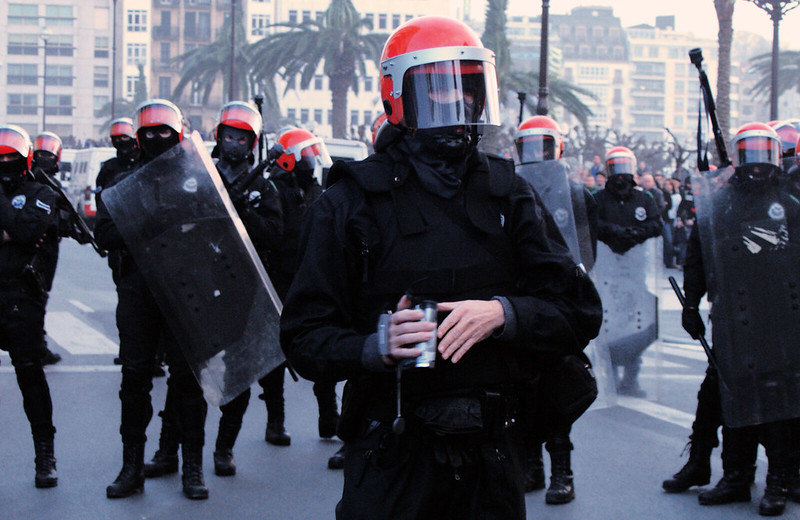
STATE VOCATION
The Ertzaintza is a Police charged with symbolism, closely linked to the PNV since its foundation, both in 1936 and in 1980. In this sense, Left Abertzale presents its proposal with the Police that intends to discuss the management of Basque institutions to the PNV. In fact, the argument that is heard over and over again is that not addressing the issue would be to leave the decision in this area completely to the “right.”
The 40th anniversary of the Ertzaintza provoked various controversies. At the beginning of the year there were several posters calling for participation in the public job offer of the Ertzaintza and the local police, but instead of the usual photos, the posters of the Ertzaintza hit the youth. The Basque Government Security Advisor Josu Erkoreka replied to these posters. In his interview on the Boulevard de Radio Euskadi program, Erkoreka highlighted the “professionalism, commitment and vocation of service” of the Ertzainas on the 40th anniversary of the police institution, “this is also included in society”. However, he acknowledged that the Ertzaintza has a “continued desire for improvement”. Sortu Secretary General Arkaitz Rodríguez replied to Erkoreka’s words: “We are in favour of a Basque police force: democratic, preventive, Basque… but unfortunately the Ertzaintza is far from that model.”
A few months before, in June 2021, the magazine Erria, edited by the Iratzar foundation linked to the Sortu party, published an intense dossier on the police model that Euskal Herria needs, presenting in a deeper way the proposal of the Abertzale Left. But this is not the first time that Left Abertzale has put the debate on the police model on the table. In 2016, for example, EH Bildu held a conference on the basis of a new public safety model in the Basque Country.
As a foreword to this issue, the editorial in this issue of Erria is entitled “From the need to move away from comfort and to assume tasks from a local perspective”. And from this point of departure they address the question of the police model: “As we have a statehood, we also have more thorny issues to manage. One of them is the question of security and police.”
The articles of the dossier clearly distinguish the French and Spanish police forces and those of the “Basque Country”: that of the Foral Community of Navarra and that of the Basque Autonomous Community and the local police. The objective would be a state and therefore a police force to which it belongs, but in the meantime we must work with the instruments available and act on the existing police forces.
In the US, they put on the table the possibility of drastically reducing the sources of Police revenue, reforming or abolishing them directly in 2020.
The power of the PNV in the history of the Ertzaintza, the tensions between the different factions currently found within the police force, and the expansion of the extreme right ideology are some of the problems identified in the current police model. On the other hand, points out that in Euskal Herria there is a predominance of policemen from outside the Basque Country and that the “autochthonous” have no competence in increasingly important issues.
The Dossier also delves into other issues. They question the training of the Arkaute Academy and, in general, the model of intervention of the Ertzaintza, without proximity to citizenship and communities, isolated in police stations and that responds strongly and not with words to conflicts, among others.
The magazine proposes a model of community police. On the one hand, they point to the need for a comprehensive approach to security to be taken into account in areas beyond the Police. They put on the table a “democratic, preventive and non-sanctioning” vision of security that integrates urbanism, welfare, social services, civil protection, education and the feminist perspective. They also mention the citizen mechanisms for police control and transparency and the need for a new relationship between the police and citizens. These are common points in the debates on the Police model, and although it can to a large extent be a more humane version of the Police and a more appropriate way to manage security, it does not respond to the radical problem we mentioned in the first part of this report.
INTERNATIONAL DEBATE
The debate on the police model has also opened at international level in recent years. In the United States, for example, movements like the Black Lives Matter put on the table the possibility of drastically reducing the sources of Police revenue, reforming them and even abolishing them directly in 2020, following the assassination of George Floyd. The protests brought a series of reforms in relation to certain techniques and laws, such as putting the restraining knee on the neck, court orders to knock down the door of the house, etc., but they have not gone further.
ABOLITION NOW AND HERE
It is easy to say that the police cannot and must be abolished. The editorial of Erria magazine refers to this ease and to this “chalería”. But if the objective is universal freedom, the social function of police power must be eliminated, that must be the objective, and to do so, processes must be initiated.
The Eguna Spa has been celebrated in Altsasu / Alsasua (Navarra) for a few years. This year, police forces have been normalized. They have held a conference, a round table and a demonstration, among others. “No police! The programme is organised under the motto “Stop the repression of workers”.

Sebastian had a bracelet with the motto “The thin blue line”. It is a motto related to the movements of the extreme right. This is not the first time in the Ertzaintza the symbols of the expansion of extreme right ideology. Photo: Beñat Parra / Irutxuloko Hitza
The initiative to call for the expulsion of the Civil Guard and the Spanish police forces has gained a broader vision in recent years, rather than questioning only certain police forces, the police in general and the role of the police are questioning in their reflections.
For those attending the table, the political parties have contributed to deepening police normalization and repressive legitimization in times of capitalist crisis. As an example, the EH Bildu coalition took as a victory to lower the retirement age of the Foral Police of Navarra.
The couple of events that have marked this summer were also commented: Controversy over the participation of an ertzaina in the festivities of Mutriku and Berriozar in the first case and of a candidate for the Foral Police in the second. In alternative holiday areas, until now, police participation has been rare, but these cases have caused tension, and show that the police are expanding among young workers as others.
As they commented on in the Day of Fame round table, “For many people the police is a natural institution that is part of society, but its creation is inserted in the dynamics of capital” The commission of “maintenance of order”, therefore, although it tries to give another function to the police or, at least, try to define and limit functions in some way, will always lose the repression of any purpose and of the repression of any purpose. This was explained in the Eguna Spa: “The bourgeoisie must guarantee the status quo of capital accumulation, a task assumed by the police.”
“The police refer to a whole, it is not a partial structure. That is, it is a product of society and, therefore, to the extent that these contradictions are not resolved, it is not possible to change one’s function”, relating it to the disappearance of the social function that the disappearance of the police performs, that is, only when the “protection of capital” is not necessary can the existence of the police be questioned.
In Altsasu, they stressed the importance of the ideological struggle to advance along this path. Instead of speaking in isolation from the police institution, they talked about the social function of the police and its direct relationship with the capitalist mode of production and the capitalist social relationship.
In order to overcome the concept of police, the disappearance of their social function, the overcoming of the capitalist system is essential.
One of the bases of the debate on the police model proposed by Left Abertzale is the choice of the appropriate “local” police model. In other words, what is proposed is to remove forces from the French and Spanish police and to reform the premises. This paradigm of the National Police was questioned at the Eguna Spa: “The Ertzaintza can have a more enjoyable role, but that doesn’t mean it doesn’t keep the functions that other law enforcement bodies have. The Ertzaintza also evicts and torture because its role is above nationality.”
NO POLICE
The Eguna Spa spoke of the need to deregulate and fight the conditions of the police for repression, thus feeding the “political defense of the proletariat”. In this sense, and stressing the importance of the cultural struggle, they insisted on the need to strategically question the nature of the police rather than partially. They also commented in Altsasu that the proposals made from the “social-democratic parties” that go further in the opposite direction are “very dangerous”.
“Often the lack of police is related to chaos, but that’s not the case. The lack of police is putting an end to capitalism,” they said. Although security and well-being are necessary, the duration of the Police was associated with the duration of the capitalist social relationship at the Ospa Day round table. “Security will have to be organised, but there will be no need for a police force.” In fact, they talked about the need to overcome the police as a term and concept, and for this they stressed that the disappearance of their social function, the overcoming of the capitalist system, is essential.
Read the first part of the report: Order in capitalist states: the social function of police power
Jar gaitezen 2025erako proposamen politiko gisa, Espainiako Auzitegi Kolonialaren (AN) epai guztiak berrikusten hasteko eta makila bakoitzak bere belari eusteko.
Unionismoarekin lerrokatutako alderdi, sindikatu eta gizarte-erakunde gehienek, eta ez bakarrik horrela... [+]
This year marks the 51st anniversary of the United Nations proclamation of International Human Rights Day on 10 December. This date has become important in Euskal Herria and the Human Rights Observatory of Euskal Herria wants to offer some elements of reflection.
Progress on... [+]







